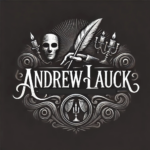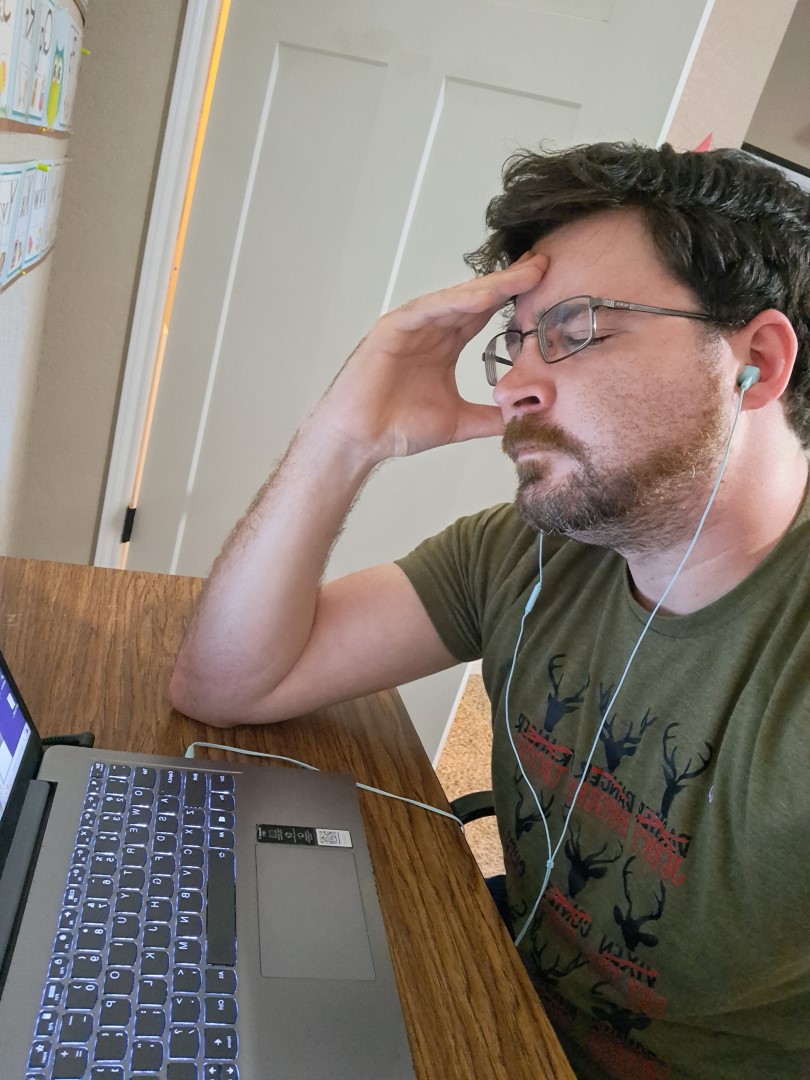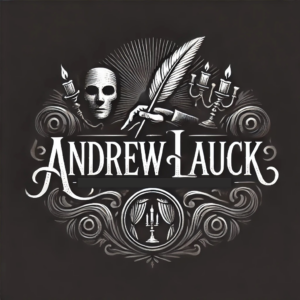Writing the Perfect Hook: How to Grab Your Reader from the First Line
A Blog by Andrew Lauck
I’ve heard that the first sentence of your novel should be the sum of the entire book. I’ve also been told that it should set the tone, which I agree with. We can all agree that the first sentence of your novel is the bait to hook readers. Let’s face it, though, there are tons of books out there in every genre.
In the sea of books, your opening line is the moment you either reel the reader in or lose them to the next shiny story that swims up. The hook is critical to learn, and there’s no way to know if you’ve mastered it because art is subjective.
With that said, there is a method to the madness. While there’s no perfect, universal hook, there are ways you can determine if your hook will sound good and keep someone reading.
Keep in mind that even this blog won’t guarantee a perfect hook, because there’s no such thing. It’s just here to help and possibly be a good start, because I’ve met countless authors that struggle with the beginning.
Know What a Hook Actually Is
A hook isn’t just about sounding cool or poetic. I’ve read a lot of pretentious first lines that are purposely long or use a lot of big words just to sound fancy, but they lack substance. A good hook is about creating tension, curiosity, or emotional connection in just a few words. It’s the thing that makes your reader go, “Wait… what’s going on here?” That little jolt of confusion or intrigue is what keeps them turning pages.
A hook can be:
- A bold, surprising statement.
- A question with no immediate answer.
- A vivid image or unsettling detail.
- A character voice that demands attention.
What it isn’t? Generic. If your opening could start just about any book, it’s not a hook. It’s a line, one of millions, and that’s not what you want.
Start With a Disruption
One of the fastest ways to write a strong hook is to start right where things go wrong, whether it’s starting in the mix or as a flash-forward and going back.
Open your story at the point of change—not when your character is brushing their teeth or making coffee, but when something is different, off, or just plain wrong.
Instead of: “It was a quiet morning in the village.”
Try: “The morning the sky turned black, nobody noticed at first.”
See the difference? The second line has questions baked into it. Why is the sky black? What happens next? Is this a disaster or something supernatural? That’s the hook doing its job.
Tap Into Emotion Immediately
A hook doesn’t have to be action-packed. It can be emotionally jarring or painfully relatable. Some of the best opening lines cut deep because they tap into a universal feeling: grief, rage, fear, guilt.
Example:
“I killed him, but I swear I loved him.”
There’s no explosion, no monster, no heroic walk away from a burning scene—but the emotional weight makes you want to read more. It implies backstory, motive, character, and conflict in just a few words.
When in doubt, start with a feeling your character can’t ignore. Give your character a reason to continue and you’ll often find the same with your reader.
Use Voice as a Weapon
If your book is told in first person or a strong close third, voice is everything. You can hook a reader by introducing a character with such a distinct, compelling voice that they have to keep listening.
Think about attitude. Rhythm. Diction. What makes your narrator different from every other character out there?
Example: “I should’ve run when I saw the teeth—but curiosity always wins.”
That’s voice doing the heavy lifting. It sets tone and gives a sense of the narrator’s personality and their problem in one quick punch.
Keep It Short, Keep It Sharp
Hooks don’t need to be long. In fact, the most powerful ones are often brief and brutally effective. They give just enough information to spark curiosity and nothing more. The longer your opening sentence, the more chances you have to lose the reader’s attention.
Some short, effective examples:
“They buried her where the ground still burned.”
“He came back different.”
“I knew it was a mistake before the blood hit the floor.”
All under ten words. All ready to snag a reader’s brain. I mean, the opening line of my first novel was, “Day 174. Still haven’t found any signs of fellow survivors.” It established a bad situation and gravitas, but it left open the why, who, what, and where of it all. I’ll always zero in on the right ending, but I do put a great deal of thought into the hook, because readers need a reason to reach the finale.
Make a Promise (and Keep It)
Your opening line sets the tone for everything that follows. If you open with something tense, weird, or gritty—your reader expects a story that delivers on that tone. Don’t bait-and-switch.
A story that starts:
“The bodies were always gone by morning.”
…can’t morph into a light romantic comedy without whiplash. That hook makes a promise about mood, genre, and stakes. Make sure you’re ready to follow through. It’s okay to tell a dark story, or a lighthearted one, but keep the tone consistent.
You can have light moments, even comedic timing, in a dark story to ease tension or give the reader room to breathe, and vice versa, but always maintain the overall tone. I can think of a couple TV shows that were supposedly funny until the very last episode, and people didn’t like that.
Test It Out Loud
Great hooks usually sound great in your head. There’s a rhythm to a well-crafted opening line that will sound great aloud, so give that a shot. Is it punchy? Does it flow or jump off the page?
If it stumbles, rambles, or feels flat—it might need tightening. Sometimes, and I know this from experience, one word can make or break the line. Be ruthless. Rework it until it sticks in your head like a song lyric.
Not to venture off-topic, but the same lesson can be attributed to later scenes in the story. I rewrote a chapter in A Broken World thirty-seven times before I was finally satisfied. It wasn’t genuine enough, real enough, heartfelt enough, etc. Don’t be afraid to delete the line and write from scratch.
Don’t Let the Hook Paralyze You
Here’s the real truth: you don’t have to write the perfect opening line right away.
Seriously. The pressure to get the first line “just right” can paralyze writers for weeks, months, or even years. I’ve known a lot of writers that have put off their novel because they don’t have a first line that absolutely nails it. That’s a lot of lost time for the sake of tweaking.
But the hook doesn’t have to be perfect in the first draft—it just has to exist. You can sharpen it later, once you know what your story really wants to say. For example, I must’ve adjusted the hook for my second book a dozen times, and it still wasn’t the one I ended with.
That’s because I went back after I’d written the last words and, with the final tone and development in mind, made something that literally wrote itself. I’m not saying that will be the case for everyone, but sometimes the perfect hook won’t reveal itself until you’ve finished the book.
Closing Thoughts
Your hook is your handshake, your opening note, your invitation into the world you’ve built. It’s purpose is to get readers to learn about your world. It doesn’t have to answer questions—but it should ask the right ones. No matter what genre you write, the hook is where your story earns its right to be read.
So take your time. Experiment. Write five different opening lines and see which one haunts you the most. I had a whole page in my notebook with different opening lines. I had several pages for different back-cover blurbs. You’ll know when it feels right, trust me.
Above all, remember this: the perfect hook doesn’t just pull readers in. It dares them to let go.


